Cockroaches in California
Cockroaches are a prevalent household pest in California, posing health risks and distressing homeowners. In this guide, we’ll cover the types of California cockroaches, their habitats, attractions, and effective prevention and elimination methods.
Learn how to handle these cockroach problems and maintain a pest-free home with our essential information and practical tips.
Key Takeaways
- California is home to various types of cockroaches, each with distinct characteristics, diets, and habitats.
- Roaches are drawn to food, water, and shelter. Maintaining a clean, dry, and well-maintained home environment prevents infestations.
- Combining DIY methods, such as sealing entry points and using baits and insecticides, with professional pest control services can eliminate cockroach infestations and prevent their recurrence.
– – –
🪳 Get cockroach control in Sacramento County or San Diego County
Cockroach infestations will not go away on their own
Contact Us Now To Get Rid Of Them
– – –
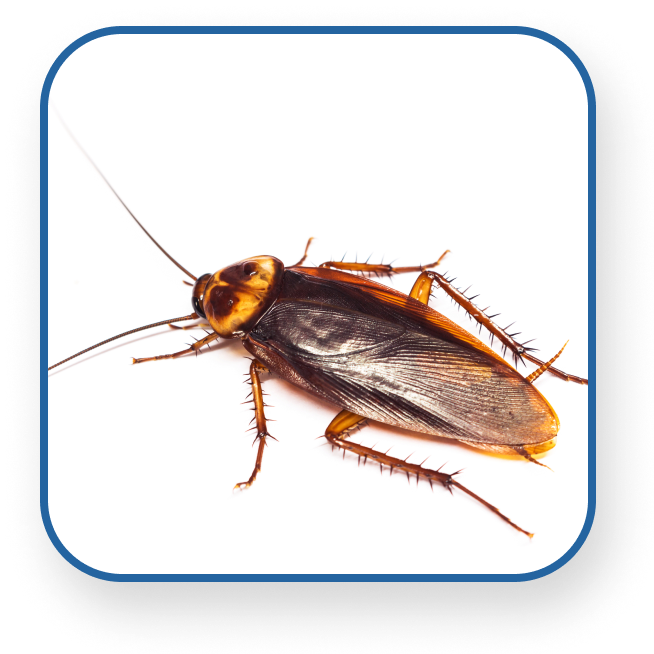
American Cockroach
Characteristics
The American Cockroach (Periplaneta americana) is one of the largest cockroach species in California. They are reddish-brown and can grow up to 1.5 to 2 inches long. These cockroaches have fully developed wings and can fly, although they typically prefer to crawl or run.
Males and females have similar appearances, with distinct, long antennae that aid navigation and detecting food sources.
Diet
American Cockroaches are omnivorous scavengers, feeding on various organic materials. Their diet includes decaying plant matter, crumbs, leftover food, and pet food.
They are also known to consume other insects and small invertebrates. As opportunistic feeders, they will eat whatever is available, making them highly adaptable to different environments.
Habitat
These cockroaches thrive in warm, moist environments. They are often found near water sources like leaky pipes and in basements, sewers, and crawl spaces.
They can also be found outdoors in leaf litter, mulch, and other damp areas. In California, American Cockroaches are commonly spotted around residential areas, commercial buildings, and green spaces, seeking shelter and food sources in various indoor and outdoor settings.
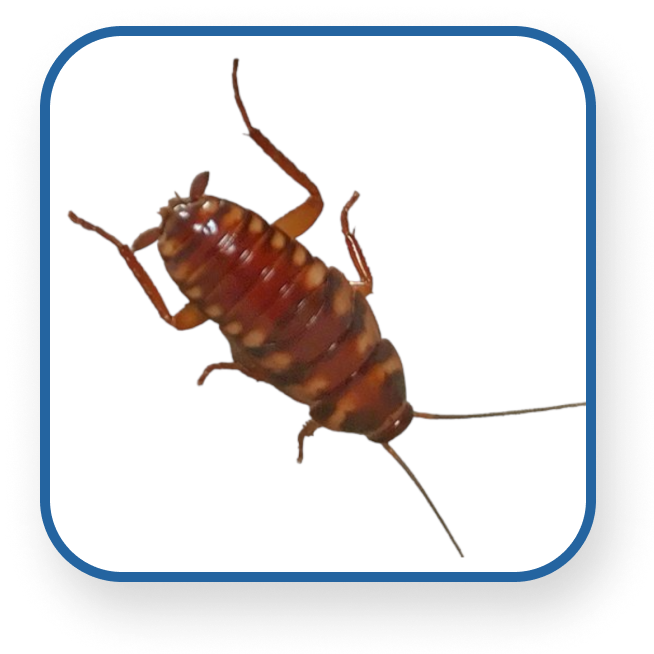
Brown Banded Cockroach
Characteristics
The Brown Banded Cockroach (Supella longipalpa) is small, measuring approximately 0.5 inches long. As their name suggests, they have distinctive light and dark brown bands across their body and wings, making them easily identifiable. Unlike the American Cockroach, Brown Banded Cockroaches do not have fully developed wings and are not strong fliers.
The size of their wings can distinguish males and females; males have longer wings, while females have shorter, stubby wings.
Diet
Brown Banded Cockroaches are also omnivorous scavengers, consuming a variety of organic materials. They feed on crumbs, leftover food, starches, and non-food items like wallpaper glue, book bindings, and stamps.
They are particularly attracted to high-starch and high-sugar items, making kitchens and pantries their preferred feeding grounds.
Habitat
Brown Banded Cockroaches prefer warmer, drier environments than other cockroach species. They often hide indoors in higher locations such as ceilings, shelves, and cabinets.
They can also be found in refrigerators, stoves, and electronic devices. In California, these cockroaches are more likely to infest residential buildings, especially in areas where food and clutter are readily available.
– – –
🪳 Get cockroach control in Sacramento County or San Diego County
Cockroach infestations will not go away on their own
Contact Us Now To Get Rid Of Them
– – –
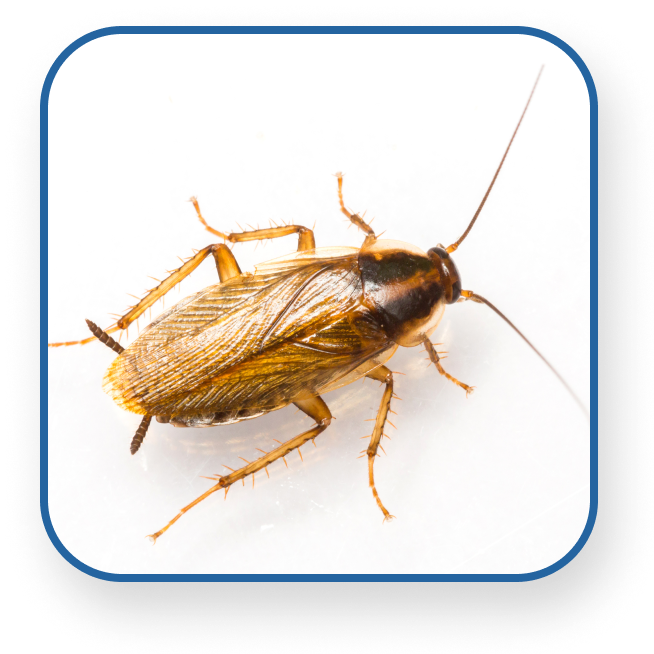
German Cockroach
Characteristics
The German Cockroach (Blattella germanica) is one of California’s most common and troublesome species. They are relatively small, measuring about 0.5-0.6 inches in length and have a light brown or tan color with two distinct dark stripes running down their back.
Although they have wings, German Cockroaches cannot fly, relying on their fast crawling speed to evade threats.
Diet
German Cockroaches are opportunistic feeders who prefer starchy, sugary, and fatty foods. They consume various organic materials, including crumbs, leftover food, grease, and glue from book bindings.
In desperate situations, they may resort to cannibalism, feeding on other dead or weak German Cockroaches.
Habitat
These highly adaptable pests prefer warm and humid environments, making them common in kitchens, bathrooms, and other areas with high moisture levels. German Cockroaches are mainly found indoors and are notorious for infesting residential and commercial buildings, including homes, restaurants, and hotels.
They often hide in crevices, cracks, and tight spaces close to food and water sources, making them difficult to eradicate once established in a location.
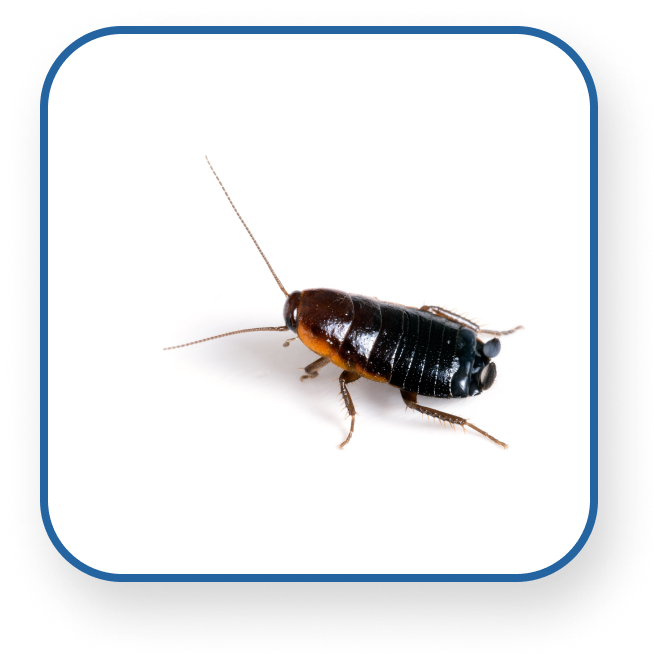
Oriental Cockroach
Characteristics
The Oriental Cockroach (Blatta orientalis) is a large and robust species growing up to 1 inch in length. They are dark brown or black, with a shiny, almost greasy appearance. While both males and females have wings, neither is capable of flying.
The wings of male Oriental Cockroaches are longer than those of females, covering almost the entire abdomen. In comparison, females’ wings are shorter and cover only about two-thirds of their abdomen.
Diet
Oriental Cockroaches are scavengers that feed on various organic materials. Their diet includes decaying plant matter, leftover food, garbage, and other rotting materials. They are particularly drawn to garbage bins, compost piles, and other areas with decaying organic matter.
Habitat
These cockroaches prefer cool, damp environments in basements, sewers, crawl spaces, and other dark, moist areas.
They are more likely to be found outdoors in California, particularly in gardens, under debris, and around drains. However, they can also invade homes and other structures in search of food and shelter, particularly during periods of extreme weather or when food sources outdoors become scarce.
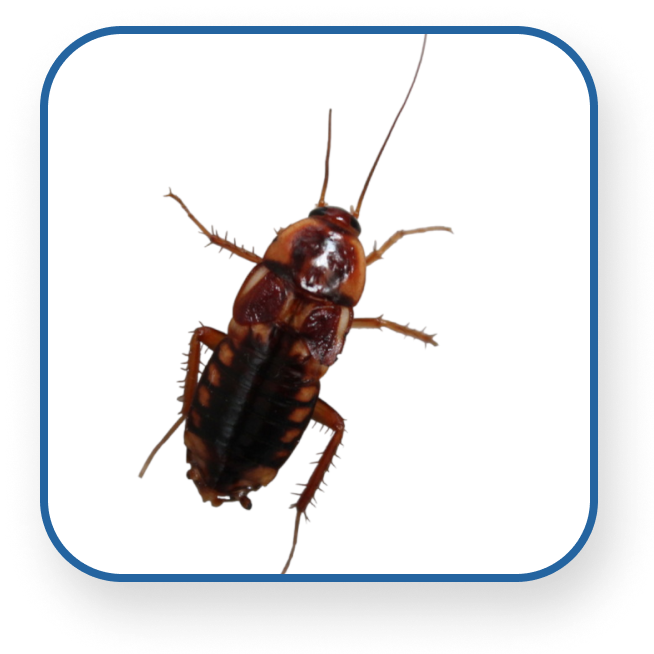
Turkestan Cockroach
Characteristics
The Turkestan Cockroach (Blatta lateralis) is a medium-sized species with adults measuring around 1 inch in length.
Males are dark brown with a light brown or yellowish margin on their wings, while females are predominantly a dark brown color (or reddish-brown) with short, rounded wings.
Males have fully developed wings and can fly, whereas females cannot fly due to their underdeveloped wings.
Diet
Like other cockroach species, Turkestan Cockroaches are omnivorous scavengers that consume various organic materials. They feed on decaying plant matter, garbage, leftover food, and other insects and small invertebrates when necessary.
Habitat
Turkestan Cockroaches are primarily outdoor pests, often found in yards, gardens, and landscaped areas. They prefer warm, damp environments and are typically found in leaf litter, under stones, and cracks or crevices in the ground.
In California, they are becoming an increasingly common pest frequently found in residential and commercial areas. Although primarily an outdoor species, they may enter homes and buildings for food, water, or shelter, especially during extreme temperatures or dry periods.
What Attracts Cockroaches in California?
Cockroaches are attracted to environments that provide them with food, water, and shelter. Understanding this can help homeowners take preventative measures to avoid a cockroach infestation.
Food Sources
Cockroaches are drawn to readily available food sources such as crumbs, leftovers, and pet food. To minimize the risk of attracting cockroaches, homeowners should:
- Keep food in airtight containers.
- Clean up spills and crumbs promptly.
- Dispose of garbage regularly and keep trash bins sealed.
- Store pet food in sealed containers and avoid leaving it out overnight.
Water Sources
Cockroaches require water to survive and are attracted to areas with high moisture levels. To deter cockroaches, homeowners should:
- Fix any leaking pipes or faucets.
- Keep kitchens and bathrooms dry and well-ventilated.
- Eliminate standing water in the yard or around the home.
- Use a dehumidifier in damp areas such as basements and crawl spaces.
Shelter
Cockroaches seek out dark, hidden spaces for shelter and breeding. To prevent cockroaches from finding suitable hiding spots, homeowners should:
- Seal any cracks or crevices in walls, floors, and foundations.
- Keep clutter to a minimum, especially in basements, garages, and storage areas.
- Regularly inspect and clean less-frequented areas of the home such as behind appliances and under sinks.
- Maintain the yard by removing debris, trimming vegetation, and eliminating potential hiding spots.
– – –
🪳 Get cockroach control in Sacramento County or San Diego County
Cockroach infestations will not go away on their own
Contact Us Now To Get Rid Of Them
– – –
How to Get Rid of Cockroaches
If facing a cockroach infestation, act quickly to eliminate and prevent its spread. Here are some essential steps:
DIY Methods
- Baits and Traps: Use store-bought cockroach baits and traps to capture and kill pests. Place them in areas of cockroach activity like under sinks or behind appliances.
- Insecticides: Apply sprays or dust insecticides in target areas, following product instructions and safety precautions. Note that some species may be resistant to certain pesticides.
- Seal Entry Points: Identify and seal cracks, gaps, or openings that let cockroaches enter, preventing new infestations and limiting existing ones.
- Maintain Cleanliness: Clean your home regularly, focusing on areas where cockroaches hide and feed. Keep kitchens and bathrooms clean, vacuum often, and dispose of garbage promptly.
Professional Pest Control Services
Professional exterminators are necessary when DIY methods fail or the infestation is severe. Professionals offer more effective pest management, expertise in identifying cockroach species, and comprehensive solutions, including:
- Detailed inspections to assess infestation extent and species
- Customized treatment plans using approved methods and products
- Ongoing monitoring and follow-up treatments for complete eradication
Combining DIY efforts and professional pest control ensures effective cockroach elimination and prevention of future infestations.
– – –
🪳 Get cockroach control in Sacramento County or San Diego County
Cockroach infestations will not go away on their own
Contact Us Now To Get Rid Of Them
– – –



